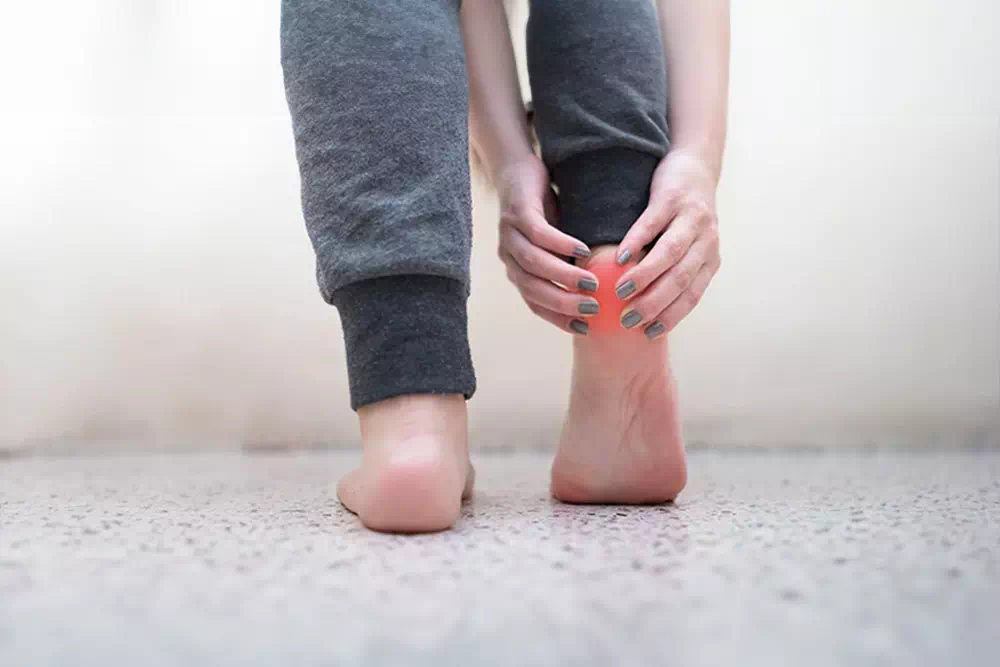Heel spur, also known as plantar fasciitis, is characterized by heel pain, especially intense during the first steps in the morning or after a period of inactivity. This pain is caused by inflammation of the plantar fascia, resulting in tension and micro-tears at its attachment point on the calcaneus.
Cause of heel spur
- Overuse
- Repetitive stress on the plantar fascia
- Intense physical activities
- Excessive walking
- Inappropriate footwear
It is important to note that heel spur can result from a combination of these factors. Consulting a healthcare professional can help determine the specific causes in each case and develop an appropriate treatment plan.
HOW DO I KNOW IF I HAVE A HEEL SPUR?
If you experience sharp heel pain, especially during the first steps in the morning or after a period of inactivity, you may have a heel spur. The pain may decrease during the day but can return after prolonged activity. Sensitivity to touch at the heel and pain when pressure is applied to this area can also be indicators. However, an accurate diagnosis requires a medical evaluation by a healthcare professional, such as a podiatrist or doctor, who may use clinical examinations and imaging tests, such as X-rays, to confirm the presence of a heel spur.
HEALTH ISSUES ASSOCIATED WITH HEEL SPUR
Heel spur, or plantar fasciitis, is associated with persistent heel pain, mobility limitations, gait adjustments, and a potential negative impact on daily quality of life.
- Heel pain: Heel spur is primarily characterized by sharp pain in the heel, particularly felt during the first steps in the morning or after a period of inactivity.
- Mobility limitations: Due to the pain, there may be restrictions in mobility, affecting the ability to perform normal movements.
- Gait adjustments: To avoid pain, individuals may involuntarily adjust their gait, which can lead to additional musculoskeletal problems.
- Difficulty walking: The pain associated with heel spur can make walking uncomfortable, leading to difficulties in daily activities.
- Negative impact on daily quality of life: Persistent pain can negatively impact overall quality of life, affecting the ability to fully enjoy daily activities.
HOW TO RELIEVE PAIN ASSOCIATED WITH HEEL SPUR?
To relieve pain associated with heel spur, several approaches can be considered:
- Orthotic insoles: Wearing custom-made orthotic insoles, crafted by a podiatrist or orthotist, can provide better stability and increased cushioning.
- Forefoot cushion pads: Silicone pads placed in your shoes can help reduce pressure and cushion impacts.
- Orthopedic shoes: Wearing shoes with special features can make walking more comfortable and help alleviate pain associated with heel spur.
- Anti-inflammatory medications: Nonsteroidal anti-inflammatory drugs (NSAIDs) may be recommended to reduce inflammation and relieve pain.
- Ice applications: Applying ice to the painful area can help reduce inflammation and provide temporary pain relief.
- Stretching: Targeted stretching exercises can help loosen the plantar fascia, thereby contributing to pain reduction.
TREATMENT OF HEEL SPUR
Le traitement de l’épine calcanéenne a pour objectif de soulager la douleur et de favoriser la guérison. Il peut comprendre des médicaments anti-inflammatoires, des exercices de thérapie physique, l’utilisation d’orthèses plantaires et de chaussures appropriées. En cas de symptômes persistants, une consultation médicale est essentielle pour déterminer la meilleure approche de traitement.
